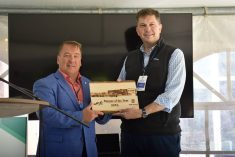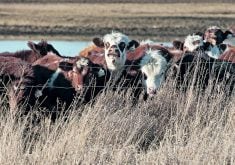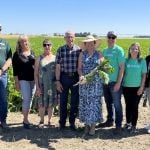A planned U.S. laboratory aimed at studying dangerous foreign animal diseases and preventing their spread to American cattle, hogs and other livestock carries the risk of spreading highly contagious pathogens, the National Research Council said Nov. 15.
The National Bio and AgroDefense Facility (NBAF), planned for construction in Manhattan, Kansas, would be the world’s third Biosafety-Level 4 Pathogen laboratory that could work with large animals. The other facilities are in Australia and Canada.
The laboratory is part of the U.S. government’s efforts to prevent natural disease outbreaks or bio-attacks on the U.S. food supply and agricultural economy.
Read Also

Province streamlines rules for ag marketing and commissions boards
Alberta farm marketing organizations are applauding the Province of Alberta for new amendments eliminating redundant paperwork-intensive regulations for agriculture marketing boards and commissions.
But the council’s report, requested by Congress before it funds construction of the facility, said that a risk assessment conducted by the U.S. Department of Homeland Security revealed “several major shortcomings.”
Among the risks, the council said, is a nearly 70 per cent chance over the 50-year lifetime of the facility that highly contagious foot-and-mouth disease (FMD) could be released, and it estimated that a spreading infection could cost the economy $9 billion to $50 billion.
The United States has not experienced an outbreak of foot-and-mouth disease since 1929, and research involving FMD has not been permitted on the U.S. mainland since 1937.
Jamie Johnson, director of the Office of National Laboratories for the U.S. Department of Homeland Security, said that the council’s findings could be helpful in designing the facility and mitigation strategies, but should not deter completion of the project.
He said Homeland Security was moving forward with the project on schedule.
“We plan to stay the course,” Johnson said. “There is a need for this facility… to study the new and emerging diseases in livestock.”
Homeland Security spokesman Chris Ortman said the calculations of risk did not account for any of the recommended mitigation measures that the department has committed to incorporating into the final design.
Ortman said the department will continue to work with U.S. Department of Agriculture and the Centers for Disease Control to ensure all recommendations from the site-specific risk assessment are properly implemented and all biosafety and biosecurity requirements are met.
“No permits will be issued by either USDA or the CDC until all requirements are met,” he said. “DHS will not build or operate the NBAF unless it can be done in a safe manner.”














